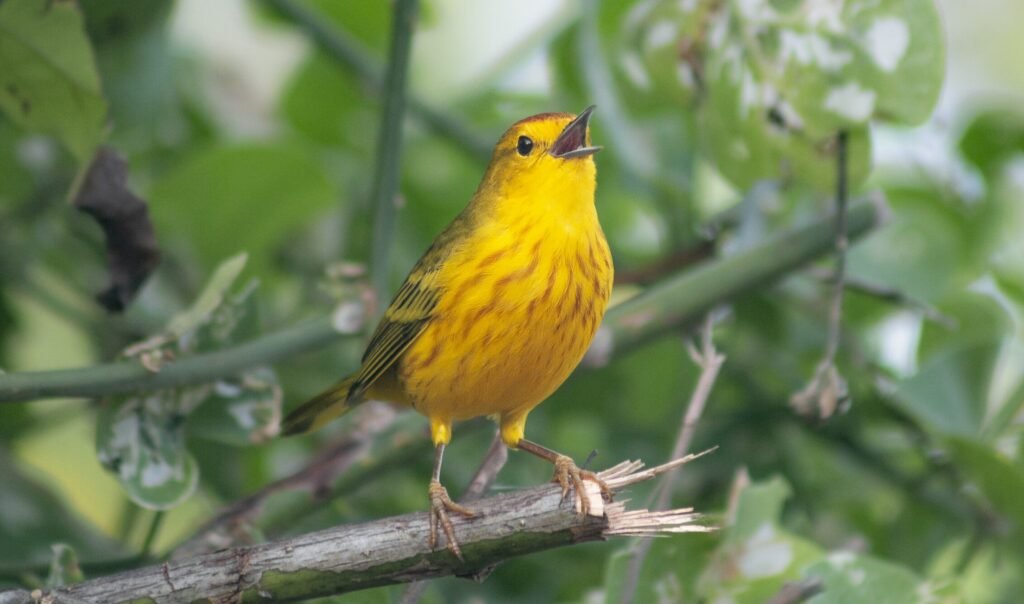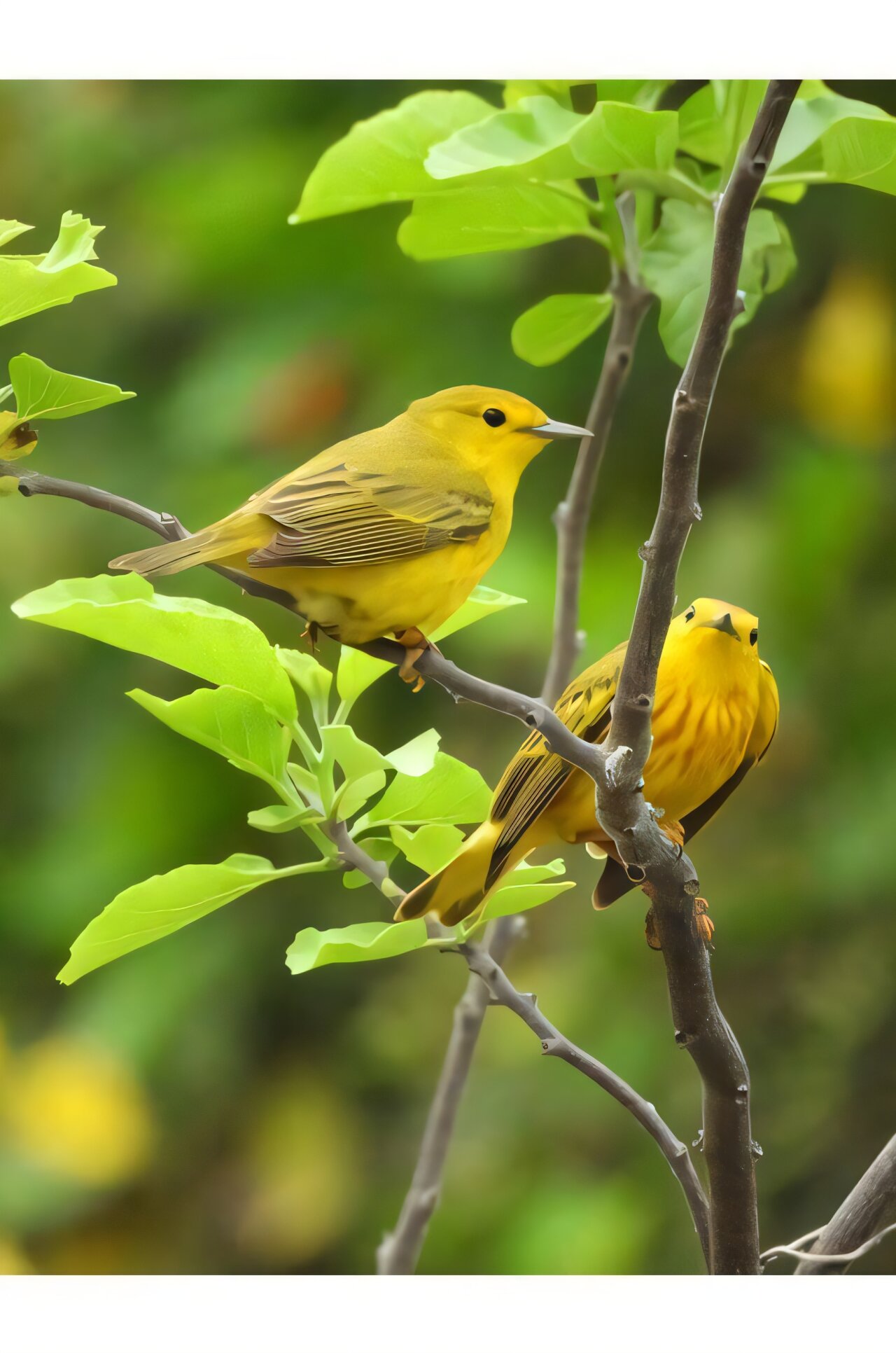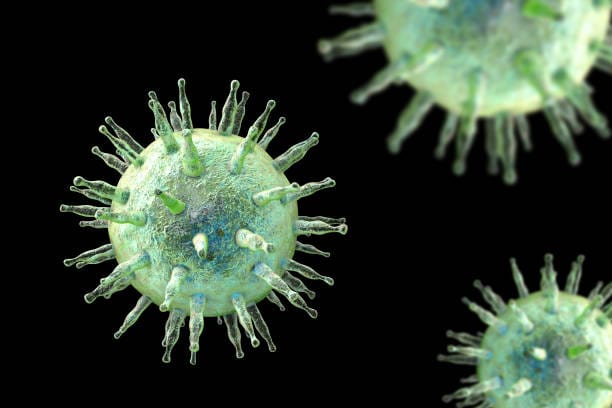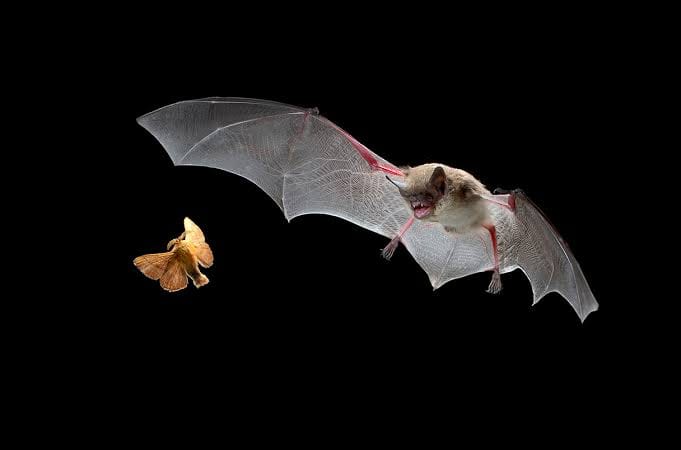In the remote expanse of the Pacific Ocean, over 500 miles off Ecuador’s coast, the Galápagos Islands stand as a symbol of pristine nature and evolutionary wonder. This living laboratory of biodiversity helped shape Charles Darwin’s groundbreaking theory of natural selection after his visit in 1835. But nearly two centuries later, a very modern force is reshaping the lives of its unique wildlife: traffic noise.
A new study published in the journal Animal Behaviour reveals that even the relatively low hum of vehicles on these isolated islands is triggering noticeable changes in the behavior of one of its most iconic birds—the Galápagos yellow warbler (Setophaga petechia aureola). Once known mainly for their cheerful songs and bright yellow plumage, these birds are now singing a different tune, and it’s one of heightened aggression.
Modern Noise in a Natural Paradise
The Galápagos Islands, home to an array of species found nowhere else on Earth, are increasingly feeling the strain of human development. Tourism booms and permanent settlements are expanding, with the islands’ human population reportedly growing by over 6% annually. More people means more vehicles—and more vehicles bring a form of pollution not as easily seen as litter or habitat destruction: noise.
Lead researchers from Anglia Ruskin University (ARU) and the Konrad Lorenz Research Centre at the University of Vienna embarked on an ambitious project to explore how traffic noise affects the behavior of the Galápagos yellow warbler. Though these islands may seem quiet compared to bustling cities, the study found that even minimal vehicle noise has a measurable impact on local wildlife.
An Experiment in Avian Territorial Defense
The researchers designed a carefully controlled experiment on Floreana and Santa Cruz, two of the archipelago’s inhabited islands. They chose 38 locations where Galápagos yellow warblers are known to defend their territories. At each site, they played recordings of an unfamiliar warbler’s song to simulate a territorial intruder. Half of these simulated encounters were paired with recorded traffic noise to mimic the presence of nearby vehicles.

Twenty of the study sites were within 50 meters of a road, and eighteen were located more than 100 meters away, providing a clear comparison between birds regularly exposed to traffic and those living in quieter areas.
What they discovered was striking. The warblers near roads responded to the simulated intrusions with elevated aggression when traffic noise was present. These birds didn’t just sing louder—they physically confronted the “intruder,” flying more frequently and getting closer to the sound source. On the other hand, birds farther from roads showed less aggression when noise was introduced, suggesting that their experience (or lack of it) with traffic noise influenced their reactions.
Perhaps most fascinating, this heightened aggression was observed even on Floreana, where vehicle traffic is extremely limited—only about ten vehicles are registered on the entire island. This highlights that even minimal exposure to noise can alter natural behaviors.
Birdsong: Adaptation in Action
Song is crucial for territorial defense in warblers. It serves as both a warning and a deterrent to rival males. But when traffic noise interferes with this vital communication, birds must adapt.
The study found that warblers on Santa Cruz, which has a higher population and more vehicle traffic than Floreana, lengthened their songs when exposed to noise. A longer song may help compensate for lost or masked information due to traffic sounds. In addition, regardless of their proximity to roads, the warblers increased the minimum frequency of their songs during noise trials. By shifting their songs to higher frequencies, the birds effectively reduced the risk of their calls being drowned out by the low rumble of engines.
This phenomenon isn’t unique to the Galápagos warbler. Around the world, researchers have documented songbirds adapting their calls in noisy environments, from urban sparrows to forest thrushes. However, seeing these adaptations in the Galápagos—a place often romanticized as untouched by modernity—underscores the far-reaching impact of human activities.
Why Are Warblers Getting Aggressive?
Co-author Dr. Caglar Akcay, Senior Lecturer in Behavioral Ecology at ARU, explains that birds often use song as their primary tool in territorial disputes. But when that tool becomes blunted by environmental noise, they may escalate to more physical forms of confrontation.
“Birds use song during territorial defense as an aggressive signal,” Dr. Akcay explains. “However, if external noise such as traffic interferes with the signaling, effectively blocking this communication channel, increasing physical aggression would be an appropriate response.”
In other words, when warblers can’t rely on song to warn off rivals, they resort to physical displays—flying aggressively at intruders, performing aerial maneuvers, and physically defending their territory more often.
Lessons for Conservation in a Changing World
This study serves as a powerful reminder that behavioral plasticity—the ability of animals to adjust their behavior in response to changing environments—plays a key role in how wildlife copes with human-induced changes. The yellow warbler’s flexibility in both song and aggression demonstrates that some species can adapt quickly, but it also raises important conservation questions.
Noise pollution, often overlooked in discussions about habitat destruction and climate change, can have wide-reaching effects. If even the relatively minor traffic noise of the Galápagos Islands can alter bird behavior, what might be happening in more heavily developed areas around the world? Increased aggression could have costs, such as higher stress levels or energy expenditure, which might ultimately impact breeding success or survival rates.
Dr. Akcay stresses the importance of incorporating an understanding of animal behavior into conservation strategies. “Our study shows the importance of considering behavioral plasticity in conservation efforts and developing strategies to mitigate the effects of noise pollution on wildlife,” he says. “It also highlights the significant impact of human activities on wildlife behavior, even in relatively remote locations such as the Galápagos Islands.”
A Canary in the Coal Mine?
The Galápagos yellow warbler may be giving scientists an early warning. Changes in behavior, like heightened aggression or altered song frequencies, could signal deeper impacts on the ecosystem. After all, birds play crucial roles as pollinators, seed dispersers, and indicators of environmental health. Disruptions to their natural behavior may have ripple effects throughout the food web.
As the human footprint expands, even in places historically viewed as remote wildernesses, it’s vital to understand and address the subtle ways in which wildlife is responding. Studies like this shed light on those hidden changes—and may help inform better conservation practices before those ripples become waves.
Looking Forward: Can We Quiet the Noise?
Solutions to noise pollution are not as simple as shutting off the engines or silencing the roads. However, there are promising strategies that could help. Traffic could be limited or rerouted in sensitive areas, quieter vehicle technologies could be employed, and natural sound barriers like vegetation could be planted alongside roadways.
For the Galápagos Islands, where eco-tourism thrives on the promise of pristine wilderness, there’s a unique opportunity to lead by example. By minimizing noise pollution, the islands can protect their fragile ecosystems and preserve the delicate balance that once inspired Darwin himself.
As researchers continue to monitor the yellow warblers and other species, one thing is clear: even the smallest sounds can carry profound consequences in nature. Understanding those consequences is the first step toward ensuring that the chorus of the Galápagos Islands—its songs, its silences, and all the life in between—continues for generations to come.






